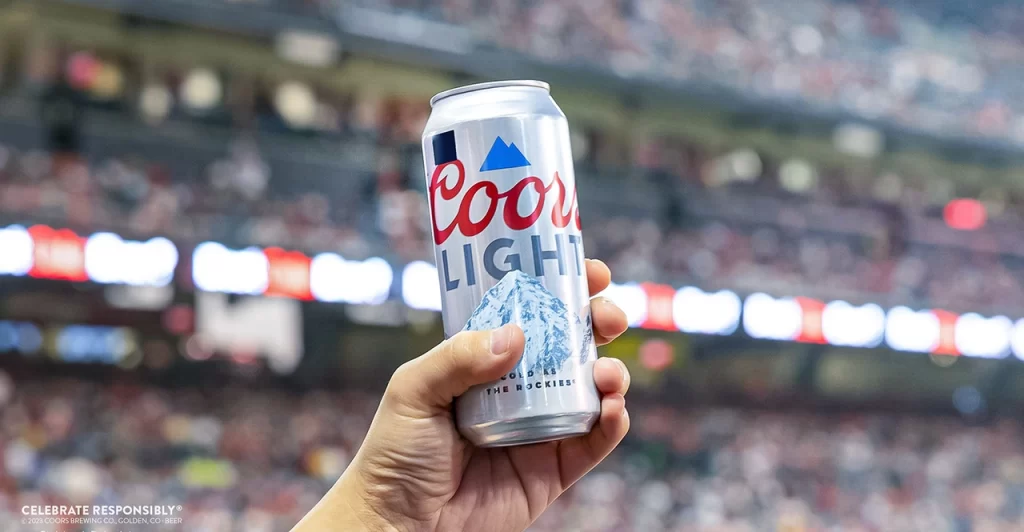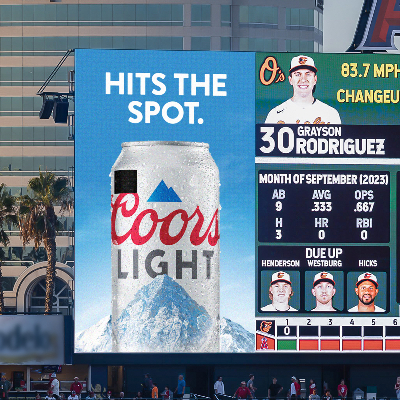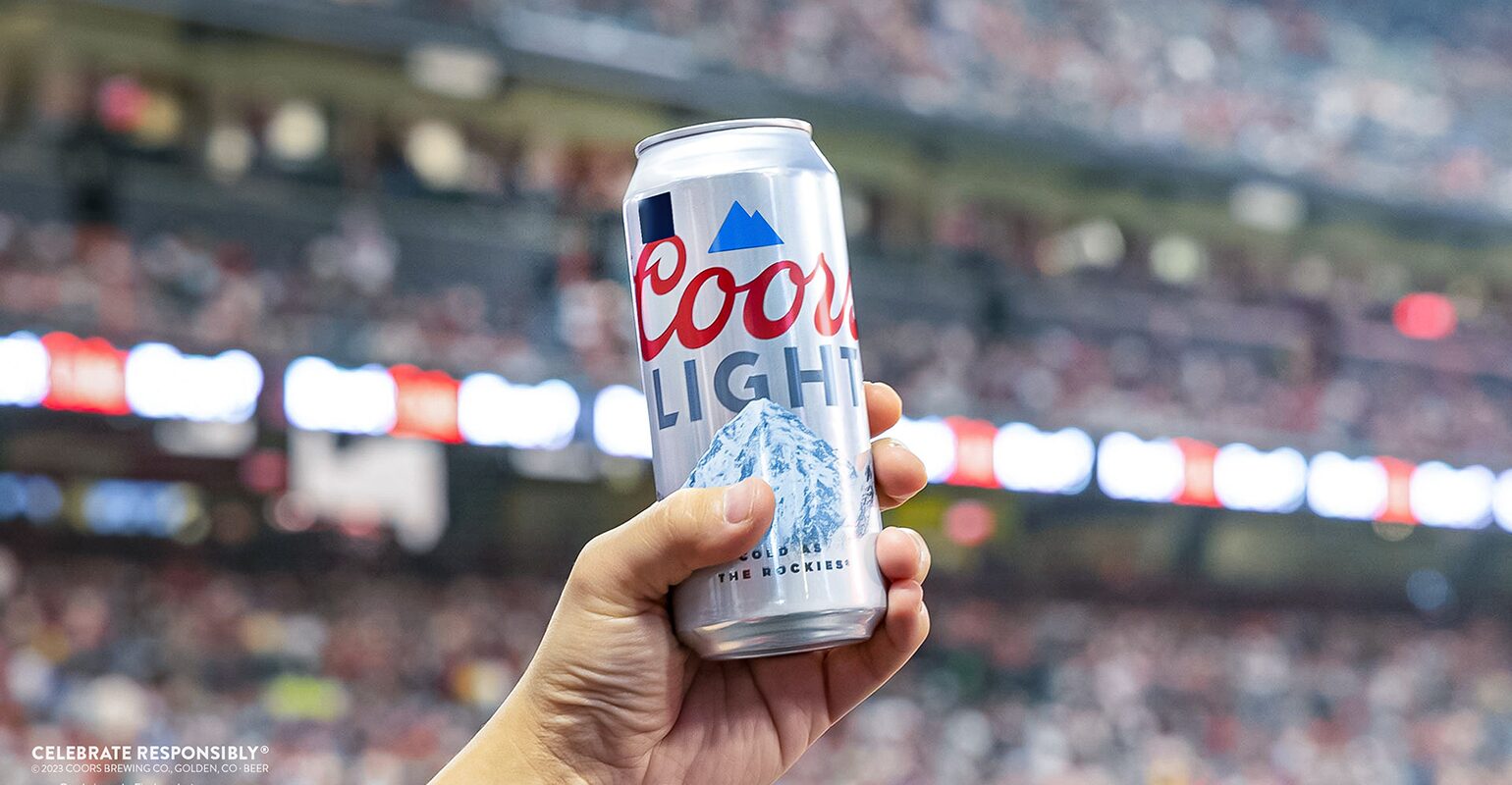In the world of sports marketing, brands invest millions of dollars to associate themselves with major leagues, events, and athletes. The beer industry, in particular, sees heavy competition as brands vie for the coveted position of “the official beer” of sports like baseball. However, Coors Light turned this paradigm on its head with a bold and opportunistic campaign, showing that innovation, agility, and timing could achieve greater results than long-standing sponsorship deals. Coors Light’s “Lights Out” brand campaign is a remarkable story of turning a minor advertising mishap into a viral marketing sensation. This campaign not only enhanced Coors Light’s brand image but also demonstrated the power of reactive marketing—a method where brands capitalize on real-time events to build organic buzz and visibility.
What sets this campaign apart is how it began. During a Los Angeles Angels game against the New York Mets, star player Shohei Ohtani accidentally hit a foul ball that struck an LED display advertising Coors Light. The ball damaged the display, leaving a pixelated black square on the screen right above the iconic Coors Light can. Instead of viewing this as a mistake that needed to be fixed, Coors Light—together with their creative agency, Rethink Canada—saw an incredible opportunity to turn this minor flaw into an entire campaign. This moment birthed the “Lights Out” campaign, proving that quick thinking and creativity can outshine even the most expensive sponsorship deals.
Campaign Activation and Strategy
The success of the Lights Out campaign lies in its rapid execution and clever approach to capitalizing on the mishap. Within just 48 hours of the game, Coors Light launched a special-edition can, designed to replicate the LED screen’s damaged look. The limited-edition can featured the same black square that had appeared above the Coors Light logo in the baseball game. This tongue-in-cheek response immediately caught the attention of fans, and the cans sold out in less than 24 hours.

Coors Light didn’t stop with the limited-edition can. To further build on the momentum, they began integrating the black square from the damaged ad into their outdoor advertising (OOH) and wildpostings around Anaheim, the hometown of Shohei Ohtani and the Los Angeles Angels. The modified ads were placed strategically in locations where Angels fans would see them, including in and around Angel Stadium. Digital screens inside the stadium were also updated to include the pixelated black square above the Coors Light logo, making it impossible for fans to miss the connection between the in-game moment and the campaign.

One of the most innovative aspects of the campaign was how Coors Light utilized digital and social media to push the narrative. The brand used hashtags, memes, and viral content to get fans involved in the campaign. The black square symbol quickly became synonymous with Coors Light’s clever marketing strategy, as fans started posting images of themselves with modified Coors Light cans, adding black squares to existing Coors merchandise, and sharing stories on social media about the moment in the game.
Angel Stadium itself became a core element of the campaign’s visual storytelling. On the day Shohei Ohtani returned to play a home game, Coors Light flooded the stadium with modified digital screens that showcased the iconic black square above the Coors can. The brand also extended the campaign to New York and other baseball markets, ensuring it reached a national audience.
Viral Impact and Cultural Significance
The Lights Out campaign quickly became more than just a clever marketing stunt—it evolved into a viral sensation, largely fueled by social media platforms like Twitter, Instagram, and TikTok. Coors Light leveraged the power of user-generated content (UGC) to amplify the reach of the campaign. Baseball fans, not just from Anaheim but across the country, began sharing their experiences, photos, and opinions about the “broken ad” on their social feeds. The campaign’s authenticity, humor, and relevance resonated with a wide audience, turning Coors Light into a cultural talking point.
In fact, the campaign’s popularity extended beyond the U.S. to Japan, where Shohei Ohtani is a national hero. The attention in Japan was so intense that Coors Light decided to launch its product there for the first time in history. The campaign’s crossover appeal highlights the global reach of sports figures like Ohtani and the power of leveraging cultural icons to penetrate new markets. Coors Light, previously absent from the Japanese market, became an overnight sensation.
Additionally, the damaged LED screen from Citi Field became a piece of memorabilia, representing a significant moment in baseball and advertising history. Coors Light auctioned off the broken LED panel, and it fetched an astonishing price of $7,000, underscoring the value placed on this one-off marketing event. The campaign tapped into fans’ nostalgia and love for baseball memorabilia, further embedding Coors Light into the cultural fabric of the sport.
One of the most striking outcomes of the campaign was how it managed to trend higher on social media than the official beer of MLB, a brand that had been sponsoring Major League Baseball for over three decades. Without spending any money on traditional sports sponsorships, Coors Light achieved greater visibility and consumer engagement through creativity and strategic timing.
Awards and Industry Recognition
The impact of Coors Light’s Lights Out campaign didn’t go unnoticed by the advertising and marketing industry. It became a multi-award-winning campaign, collecting accolades at some of the most prestigious industry events, including the Cannes Lions Festival of Creativity. The campaign won:
- 2 Gold Lions in categories like Brand Experience & Activation and Entertainment Lions for Sport.
- 2 Silver Lions for Media and Outdoor categories.
- 2 Bronze Lions, further cementing its status as an industry-defining campaign.
These awards celebrate the innovative and agile approach that Coors Light and Rethink Canada took in transforming an unfortunate technical mishap into a viral global phenomenon. The campaign demonstrated that sports marketing doesn’t always require traditional endorsements, partnerships, or massive ad spend; sometimes, all it takes is quick thinking, humor, and creativity.
Key Insights and Takeaways
The Lights Out campaign provides several critical lessons for marketers:
- Agile Marketing Wins – One of the most important lessons from this campaign is the value of being able to respond to real-time events. Agility in marketing allows brands to capitalize on unexpected moments that resonate with audiences.
- Lean into Authenticity – Rather than shying away from an imperfection or mistake, Coors Light embraced the damaged ad. This authenticity resonated with fans, demonstrating that brands don’t need to be perfect—they just need to be relatable and human.
- Leverage Cultural Figures – The global appeal of Shohei Ohtani played a significant role in the campaign’s success. By associating with a cultural icon like Ohtani, Coors Light was able to penetrate new markets, such as Japan, and create a cross-border sensation.
- Minimal Budget, Maximum Impact – With $0 spent on sponsorships or athlete endorsements, Coors Light showed that creativity can outshine massive marketing budgets. The campaign’s virality and buzz were built on the back of a single moment, which was amplified by fans and the media.
- Fostering Consumer Participation – The campaign encouraged fans to engage directly with the brand by creating their own versions of the black square, adding it to merchandise, and sharing their interpretations of the “broken” ad on social media. User-generated content played a significant role in extending the campaign’s reach.
Conclusion…
Coors Light’s Lights Out campaign is a shining example of how brands can harness unexpected opportunities and turn them into viral, global marketing phenomena. With a $0 sponsorship budget, the campaign leveraged responsive marketing to eclipse a long-standing official sponsor of Major League Baseball. The success of this campaign highlights the importance of creativity, speed, and cultural relevance in modern marketing, proving that even the smallest incidents can create monumental moments when handled with skill and agility. By focusing on real-time engagement and authentic storytelling, Coors Light managed to captivate audiences around the world and set a new standard for what it means to win at sports marketing.
Also Read: A Case Study on Coca-Cola’s “Hilltop” Campaign
To read more content like this, subscribe to our newsletter
Go to the full page to view and submit the form.


